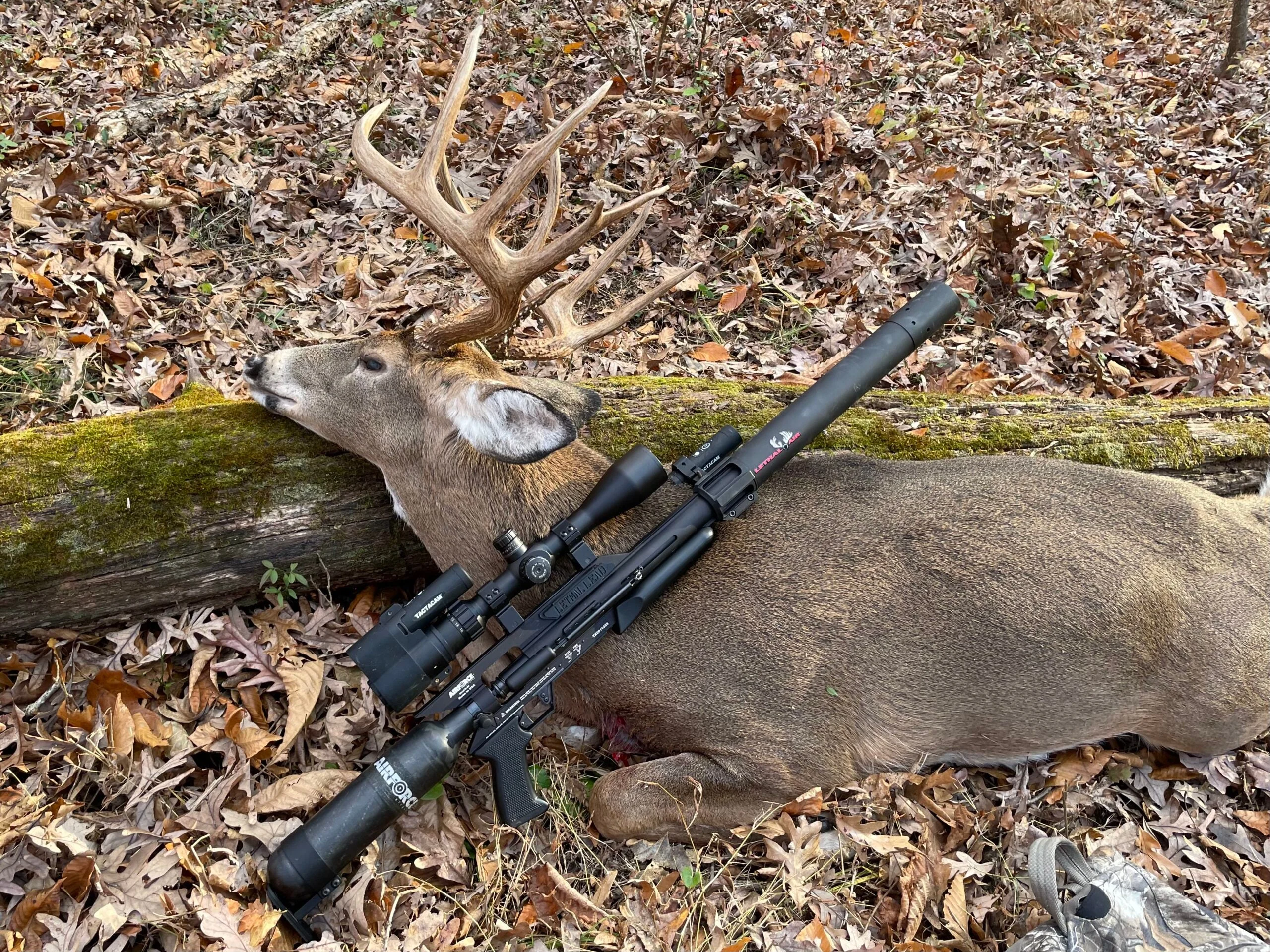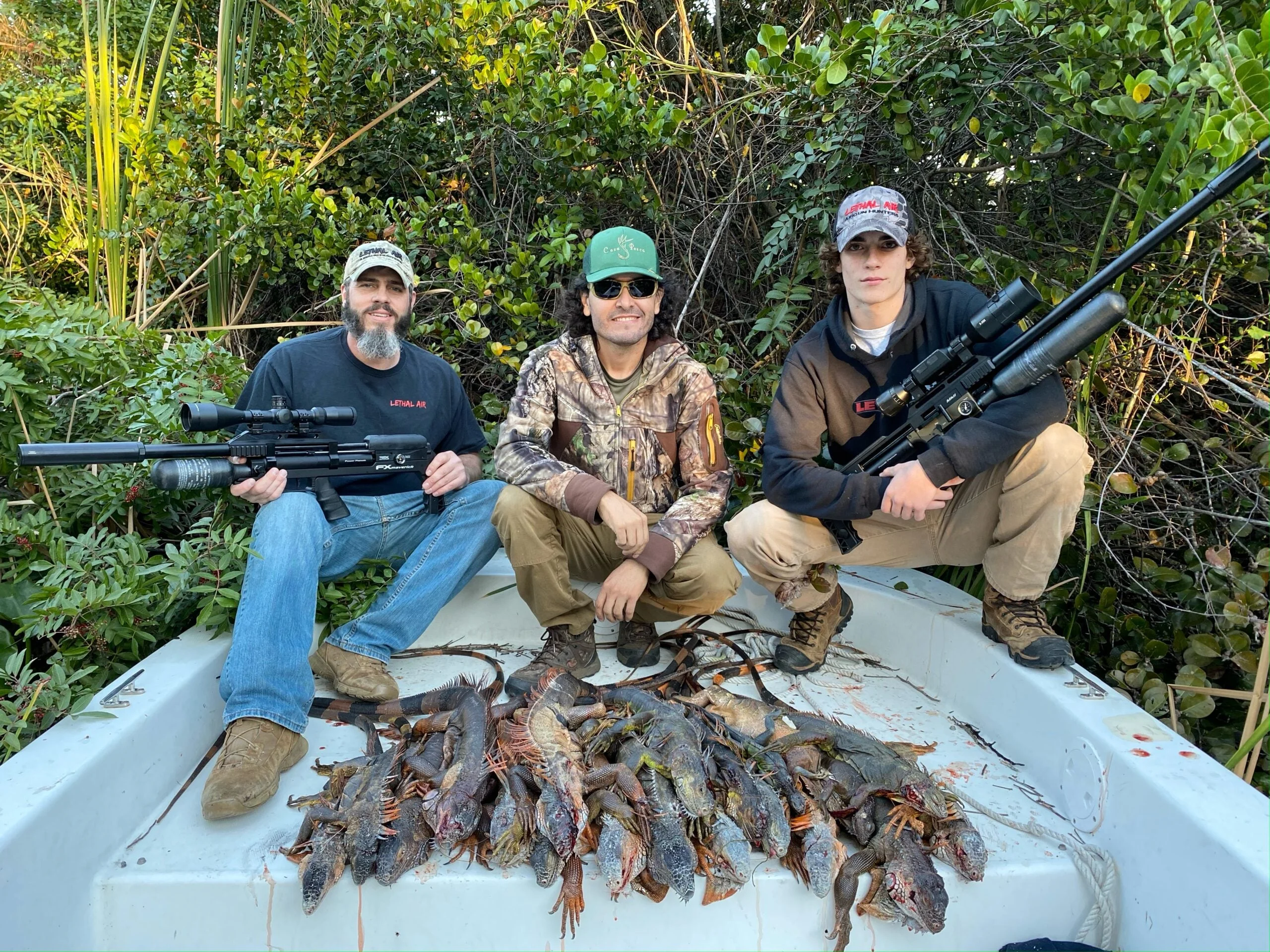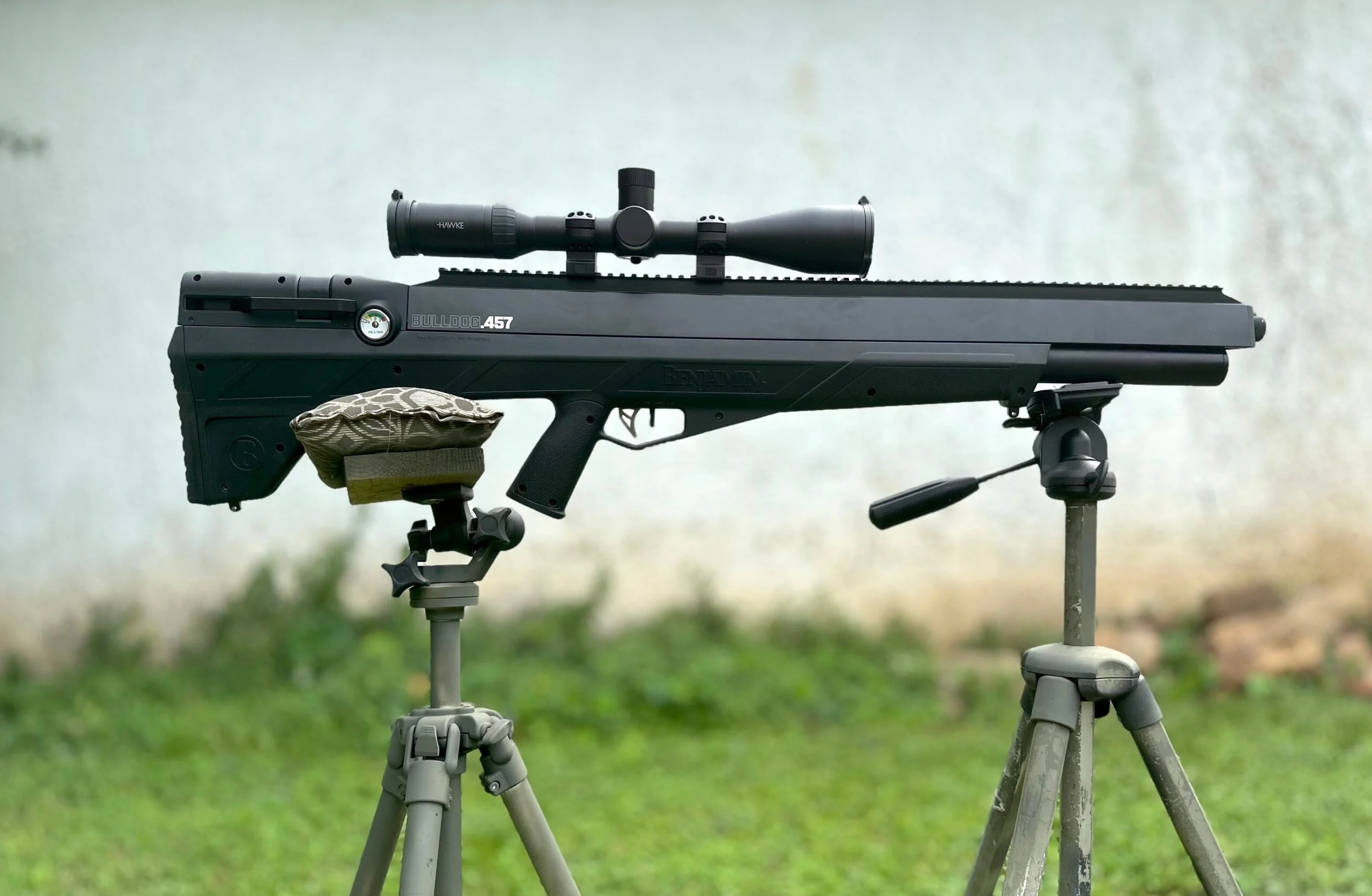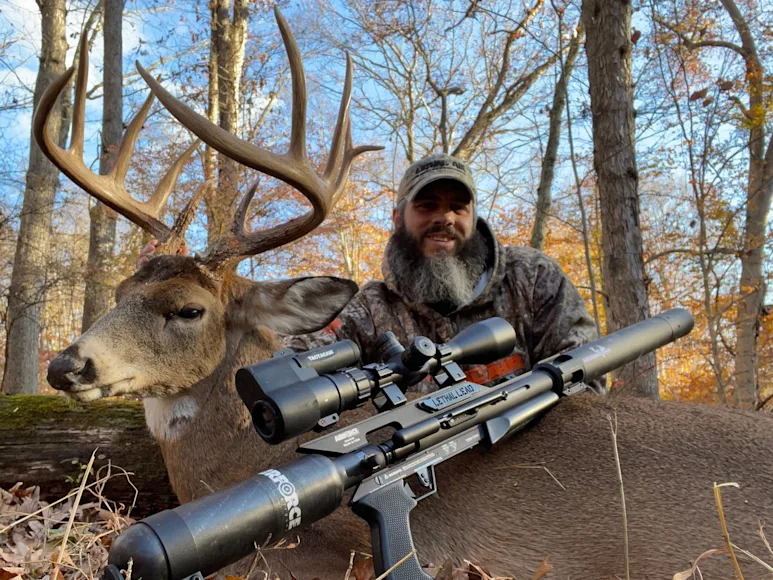A generation ago, hunting with an airgun might conjure visions of plinking away at pests with a Daisy Red Ryder or maybe hunting squirrels with a multi-pump pneumatic. Today, it means something completely different. Airguns have come a long way, and the explosive growth of pre-charged pneumatics, in particular, has helped drive the evolution.
While regulations are still catching up with the capabilities of today’s airguns
, it’s now legal across much of the U.S. to pursue bigger game than pests and squirrels with air power. So, we put together this basic guide on the benefits of hunting with an airgun, the legalities of it, and the right gear to help you get started. We even talked with an airgun expert and hunting outfitter about the benefits of air power in the woods. Here’s how to hunt everything from cottontails to big bucks with airguns.

A whitetail buck taken with a .50 caliber Air Force Texan air rifle. Chad Simon
Why Hunt With an Airgun?
A longtime firearm and archery hunter, Virginian Chad Simon discovered modern airgun hunting about a decade ago. After moonlighting as an airgun tuner, he quit his day job and now runs Lethal Air
, an airgun retailer, repair shop and tuner, and airgun hunt outfitter. Simon says airgun hunting is challenging and exciting, whether he is hunting cottontails with an air-powered shotgun or sitting in a treestand waiting for a trophy whitetail with a high-powered air rifle such as a .50 caliber Air Force Texan.
“I tell people that hunting deer with airguns falls somewhere between hunting them with a muzzleloader and a bow,” he said. “You have to get close, be scent-conscious, know your equipment and your abilities, and make carefully placed shots.”
Like with bowhunting, that extra level of commitment, which includes lots of time on the range, is a big part of the draw. But there are other appealing aspects, too.
“It can be a great way to introduce new or young hunters to the sport because you don’t have the loud bang and the recoil,” Simon said. The lower noise also means airguns can be a more appropriate hunting option in urban and suburban environments where deer control is needed, but where hunting with firearms is not legal or practical. When Simon shot a record book whitetail while hunting with a friend on a 125-acre farm in suburban Virginia, for example, the friend didn’t even hear the shot.

A pile of iguanas on an airgun hunt in South Florida. Chad Simon
Legal Considerations
Before stepping afield to pursue game with an airgun, hunters must be familiar with laws and regulations. According to the interactive Airgun Sporting Association hunting map
, 23 states currently allow hunting big game with airguns. Nearly all states allow small game hunting with airguns
.
Such privileges come with equipment requirements that vary, primarily for big game hunting. For example, some states have minimum caliber requirements. Others focus on minimum levels for foot-pounds of kinetic energy produced by the weapon. Some states have both caliber and foot-pounds of energy requirements.
Simon says more states are legalizing big game hunting with airguns as decision-makers become familiar with the capabilities of today’s high-powered guns. He has traveled to several states to lobby for regulation changes and expects even more states to join the movement in the near future.
“Some of these people had no idea what these guns can do,” he said. “They hear ‘airgun,’ and they think about a Red Ryder.” But the airguns Simon and other hunters are talking about are more than capable of taking down whitetail.
The Appropriate Weapon
Beyond meeting regulations, kinetic energy
, calculated from a projectile’s mass and velocity, is a key factor in determining a gun’s practical hunting capabilities. The hunter’s ability and the gun’s accuracy are also important, of course, because the lower energy of airguns (compared to firearms) requires precise shot placement and leaves much less margin for error.
For hunting small game such as squirrels
and rabbits
, a rifle (or pistol) capable of producing 11 foot-pounds of energy—a 14-grain .22 caliber pellet traveling 600 feet per second, for example—is sufficient for an ethical kill. Break barrel and multi-pump pneumatic rifles and some pistols can hit those numbers. They are also affordable, widely available, and simple to use.
A pre-charged pneumatic gun is needed to obtain the energy numbers required for big game hunting. The number of mass-produced high-powered air rifles suitable for big game hunting continues to grow. These guns range from modestly priced models, such as the $720 Seneca Dragonclaw II, to higher-end rifles, such as the aforementioned Air Force Texan
, which retails from about $1,200 to about $1,500.

Capable of producing close to 400 foot-pounds of kinetic energy, the Benjamin Bulldog .457 is among the high-powered pre-charged pneumatic air rifles capable of ethically taking deer-sized game. Mark Taylor
A good rule of thumb is that a gun should produce at least 200 foot-pounds of energy (a 240-grain slug traveling 610 feet per second, for example) to be viable for hunting deer-sized game. Many hunters prefer guns with at least double that power. Simon says that his early deer hunts were with rifles in the 200-foot-pound neighborhood. Those guns were effective, and Simon has never not recovered an airgun-shot deer. Although they didn’t produce pass-through shots.
“I’d usually find the slug embedded on the inside of the hide on the other side of the deer,” he said. This is one of the reason precise shot placement is so critical for both small and big game.
For small game, headshots are the best option. That equates to a quarter-sized kill zone. For medium-sized game, the heart and lungs are the ideal target zone. That’s because the key to a quick and ethical big game airgun kill is blood loss—like in archery hunting—not shock trauma like that caused by a centerfire rifle capable of 3,000 foot-pounds of energy.
“I never take headshots [when deer hunting], and I urge others not to try them,” Simon said. “Too much can go wrong.” Though he shoots rifles capable of more distance, Simon prefers shots 75 yards and closer, which he says is where most of his opportunities come in the woods anyway. He always waits for a broadside shot. “And I try to shoot lower on the rib cage, too,” he said. “That can help with the blood trail.”

An 8-grain .177 pellet compared to a 279-grain Benjamin .457 slug. Mark Taylor
How to Hunt With Airguns: Gear
Despite the incredible capabilities of modern airguns, they still have limitations. A 30-06 Springfield cartridge, for example, can easily produce 3,000 foot-pounds of energy at the muzzle. A hunter shooting a centerfire rifle with a muzzle velocity of 3,000 feet per second who is zeroed at 100 yards doesn’t have to account for ballistics when aiming in close-quarter hunting situations.
On the other hand, a 240-grain slug fired at 800 feet per second from an air rifle will drop significantly from 50 to 100 yards. So, while you may be able to get away with a simple 4×32 scope for small game hunting at close range, a scope with an MOA or MRAD reticle is almost a must for serious airgun hunters.
“You absolutely have to know your drop,” Simon said. “You have to spend time at the range for that.”
While the initial investment in a good air rifle and the needed equipment—like an external air tank for your PCP—can be significant, ammo is relatively affordable. So, you can shoot a lot. For airgun hunters like Simon, that’s just fine.
Know Your Local Regulations and Use the Proper Gun
Make sure to know your local airgun hunting regulations before taking to the woods. Every state has different laws for what game species can be hunted with air power. If you aren’t sure what you can and can’t hunt, use this interactive map
to see what’s legal in each state. Next, it’s important to choose an airgun with enough power to ethically make a clean kill. For small game, a .22 caliber pellet will do just fine. However, for big game, hunters should invest in a pre-charged pneumatic gun that can produce at least 200 foot-pounds of energy.
Those are the bare bones of hunting with an airgun. Once you know the regulations and have the proper gear, then you can focus on hunting tactics. Which is similar to hunting with a muzzleloader or bow—close shots, excellent precision, and heart-racing action.


